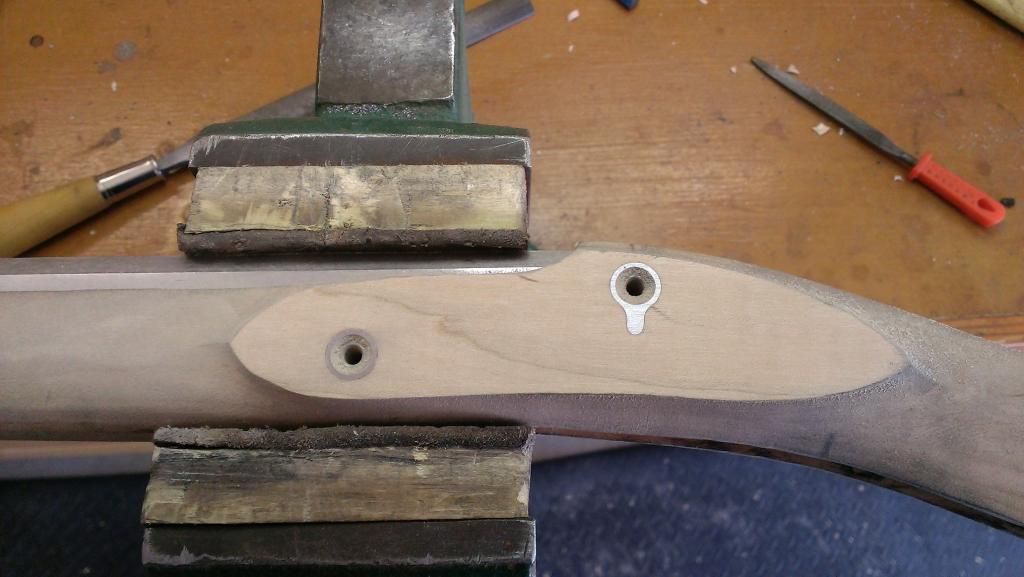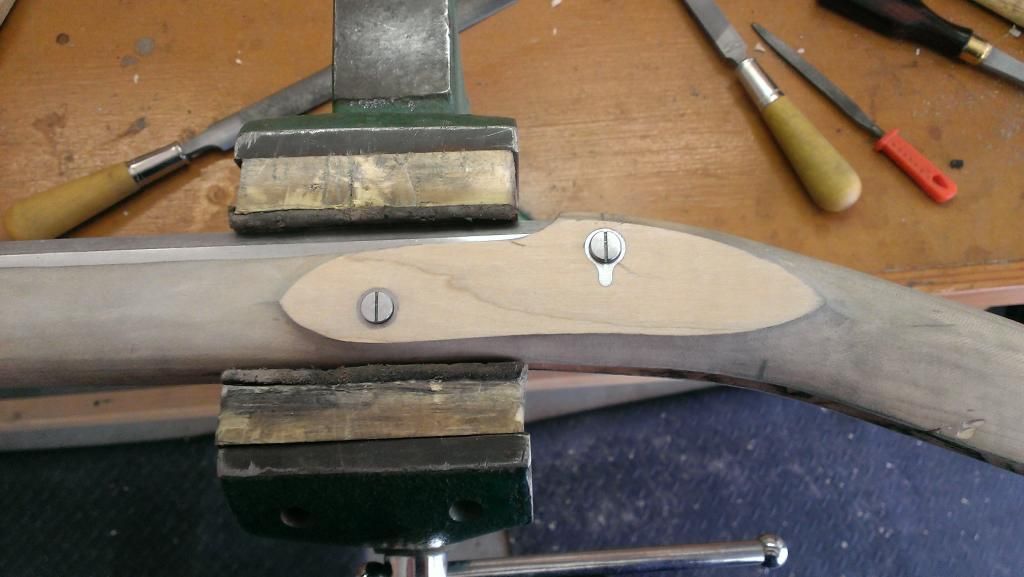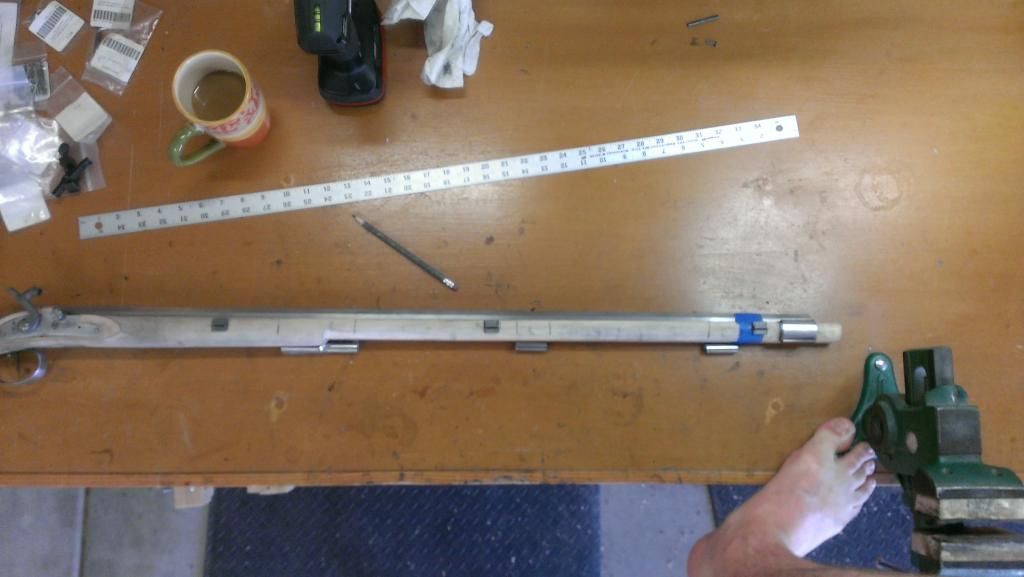- Joined
- Nov 26, 2005
- Messages
- 5,221
- Reaction score
- 10,877
Hi,
Since your rifle will use barrel keys rather than pins, I would avoid using staples. Install dovetailed lugs and make the loops wide, 3/16-1/4 inch would be good. That provides a wider surface than staples for the key to slide across and gives a firmer and better fit relying less on the inlet in the wood for support. I've used staples before and they are easy as long as you drill correctly, but they are very inferior when using barrel keys. Since I almost always use keys nowadays, I don't bother with staples anymore.
dave
Since your rifle will use barrel keys rather than pins, I would avoid using staples. Install dovetailed lugs and make the loops wide, 3/16-1/4 inch would be good. That provides a wider surface than staples for the key to slide across and gives a firmer and better fit relying less on the inlet in the wood for support. I've used staples before and they are easy as long as you drill correctly, but they are very inferior when using barrel keys. Since I almost always use keys nowadays, I don't bother with staples anymore.
dave








